Leave a Reply
You must be logged in to post a comment.
Proper trailer plug wiring is essential for safety and functionality. This guide covers types‚ diagrams‚ and best practices to ensure reliable connections for your trailer’s electrical systems.
Proper trailer plug wiring is crucial for ensuring safety‚ functionality‚ and legal compliance. Incorrect wiring can lead to electrical failures‚ accidents‚ or even fires. It prevents issues like faulty brake lights‚ turn signals‚ or marker lights‚ which are essential for road safety. Proper connections also protect your vehicle’s electrical system from damage caused by power surges or short circuits. Additionally‚ correct wiring ensures that auxiliary power‚ brakes‚ and other systems function as intended. Improper wiring can drain your vehicle’s battery or cause malfunctioning lights‚ leading to potential hazards. Regular checks and correct installation are vital to maintain reliability and avoid costly repairs. Always follow standardized wiring diagrams to guarantee safe and efficient operation.
Trailer plug types vary based on the number of pins‚ each serving specific functions. The 4-pin plug is the most common‚ supporting basic lighting functions like brake lights and turn signals. The 5-pin adds a dedicated circuit for auxiliary power‚ often used for trailers with internal lighting. The 6-pin includes an extra function‚ such as electric brakes or a 12V power supply. The 7-pin is the most advanced‚ supporting all functions‚ including brakes‚ lights‚ and auxiliary power. Each type is designed for different trailer needs‚ from simple setups to complex systems with multiple electrical components. Understanding the right plug for your trailer ensures proper connectivity and functionality. Always match the plug type to your trailer’s electrical requirements for safe and reliable operation.
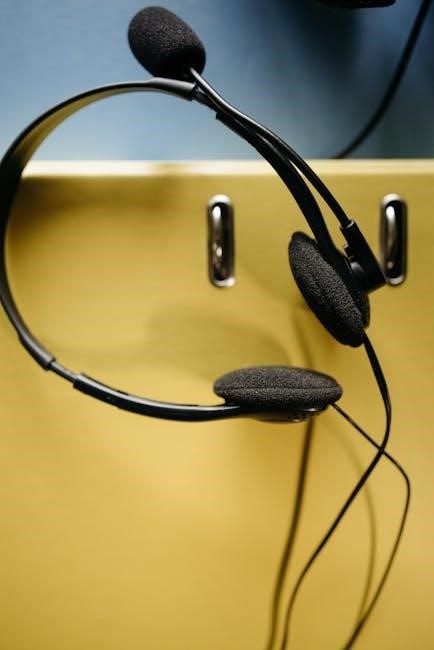
Trailer plugs vary in pin configurations‚ each designed for specific electrical needs. From basic 4-pin setups to advanced 7-pin systems‚ understanding the differences ensures safe and proper connections.
The 4-pin trailer plug is the most common configuration‚ providing basic lighting functions. It includes one wire for left turn/brake‚ one for right turn/brake‚ one for taillights‚ and a ground wire. The colors are typically green (right turn)‚ yellow (left turn)‚ brown (taillights)‚ and white (ground). This setup is ideal for trailers with simple lighting needs‚ such as small utility or boat trailers. The wiring diagram is straightforward‚ with each pin assigned to a specific function. Proper connection ensures that the trailer’s lights synchronize with the vehicle’s signals. Always test the connections by activating the vehicle’s lights to confirm functionality. This reliable configuration is widely used due to its simplicity and effectiveness for basic trailer setups.
The 5-pin trailer plug is designed for trailers requiring more advanced functionality‚ such as separate brake lights and turn signals. It includes five wires: two for brake and turn signals (green and yellow)‚ one for taillights (brown)‚ one for auxiliary power (blue)‚ and a ground wire (white). This configuration is ideal for trailers with electric brakes or additional accessories. The wiring diagram shows each pin’s specific function‚ ensuring proper connections. The auxiliary power wire allows for charging batteries or powering devices on the trailer. Proper installation requires careful matching of wire colors to their respective functions. This setup is commonly used for larger trailers with more complex electrical systems‚ ensuring safe and reliable operation.
The 6-pin trailer plug is designed for trailers requiring additional functionality beyond basic lighting. It includes wires for left and right turn signals (green and yellow)‚ taillights (brown)‚ brakes (red)‚ auxiliary power (blue)‚ and a ground wire (white). The auxiliary power wire provides a direct 12V supply for charging batteries or powering devices on the trailer. This configuration is ideal for RVs‚ horse trailers‚ or larger trailers with advanced electrical needs. The wiring diagram clearly labels each pin’s function‚ ensuring proper connections. Correct installation is crucial to avoid electrical issues and ensure all systems function safely and efficiently. This setup is versatile and supports a wide range of trailer types and sizes.
The 7-pin trailer plug is the most common configuration for RVs and utility trailers‚ offering advanced functionality. It includes wires for left and right turn signals (green and yellow)‚ taillights (brown)‚ brakes (red)‚ auxiliary power (blue)‚ backup lights (purple)‚ and a ground wire (white). The auxiliary power wire provides a direct 12V supply for charging batteries or powering devices‚ while the backup light wire enables reverse lights on the trailer. This setup is ideal for trailers with brakes‚ interior lights‚ or other electrical systems. Proper wiring is critical to ensure all functions operate safely and efficiently. The diagram clearly labels each pin’s function‚ helping to avoid confusion and electrical issues. Always consult a wiring diagram specific to your vehicle and trailer for accurate connections.
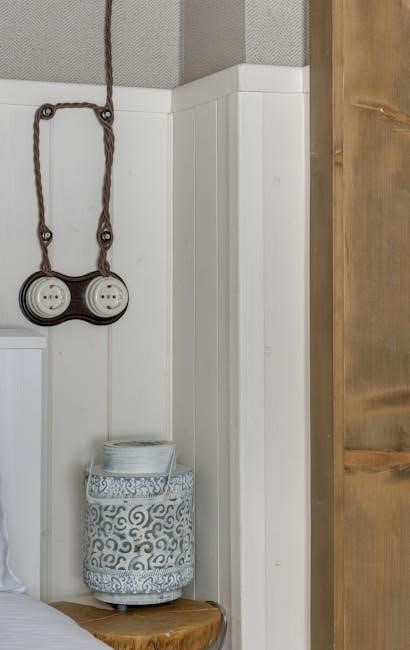
Essential tools include wire cutters‚ strippers‚ and connectors. Materials like 16-gauge wire‚ heat shrink tubing‚ and a wiring harness ensure reliable and safe trailer plug connections.
When working on trailer wiring‚ having the right tools is crucial. Wire cutters and strippers are necessary for preparing wires. A multimeter helps test voltage and connections. Pliers and screwdrivers are handy for securing wires. Heat shrink tubing and a heat gun ensure insulated connections. A wiring harness kit simplifies installation. Trailer testers verify proper function. Safety gloves protect from electrical hazards. A diagram or guide is essential for accuracy. These tools ensure safe‚ efficient‚ and correct wiring; Always use high-quality materials to avoid failures. Proper tools prevent mistakes and ensure reliability. Invest in a good set to make the job easier and safer. This setup covers all basic needs for trailer wiring projects.
For reliable trailer wiring‚ use high-quality materials. A durable wiring harness with insulated wires is essential to prevent damage. Trailer connectors and adapters ensure secure connections; Heavy-duty wire gauges (10-14 AWG) are ideal for power demands. Heat-resistant insulation protects against temperature fluctuations. Dielectric grease prevents corrosion in connectors. Weatherproof seals and gaskets keep moisture out. A circuit breaker or fuse protects against overloads. Use marine-grade materials for trailers exposed to water. Properly rated wires and connectors ensure safe electrical flow. Always match materials to your trailer’s specific needs. Durable‚ weather-resistant components are crucial for long-term reliability. Invest in materials that meet safety standards to avoid electrical issues. Consult a wiring diagram for specific requirements.
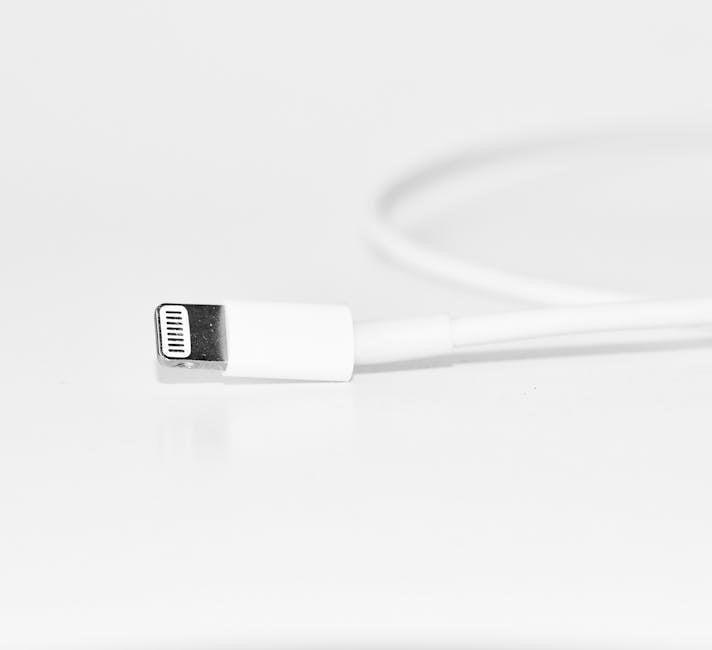
Always turn off the vehicle’s engine and lights before wiring. Ensure proper connections to avoid short circuits. Use insulated tools to prevent electric shock. Avoid overloading circuits. Regularly inspect wires for damage. Keep connections clean and dry. Never splice wires while connected to power. Test lights and brakes before towing. Follow manufacturer guidelines for wire gauges and ratings. Use a multimeter to verify voltage. Keep a fire extinguisher nearby. Ensure all safety protocols are met to prevent accidents and electrical hazards.
When working with trailer plug wiring‚ always disconnect the battery to prevent electrical shocks. Use insulated tools to handle live wires. Ensure the vehicle and trailer are on level ground. Avoid overloading circuits‚ as this can cause fires. Keep the work area well-lit and clear of flammable materials. Never touch electrical components with wet hands. Test connections with a multimeter before powering up. Regularly inspect wires for damage or wear. Secure all connections tightly to prevent loose wires. Follow the vehicle and trailer manufacturer’s guidelines. Keep a fire extinguisher nearby. Ensure all lights and brakes function correctly before towing. Always double-check wiring diagrams to avoid mismatches. Proper grounding is essential to prevent electrical hazards. Safety should never be compromised to save time or effort.
When working with trailer plug wiring‚ prioritize electrical safety to prevent shocks‚ fires‚ and damage. Always disconnect the vehicle’s battery before starting work to eliminate power sources. Use a multimeter to test wires for voltage and ensure no live currents are present. Avoid overloading circuits‚ as this can cause overheating and fires. Properly ground all electrical components to prevent voltage spikes; Insulate all connections and avoid exposed wires. Use relays to control high-current devices like brakes and lights. Never splice wires directly to the battery without a fuse. Keep electrical components away from flammable materials. Regularly inspect wiring for damage or corrosion. Follow the manufacturer’s guidelines for wire gauges and ratings; Ensure all connections are secure to prevent short circuits. Electrical safety is critical to protect both the vehicle and trailer systems.
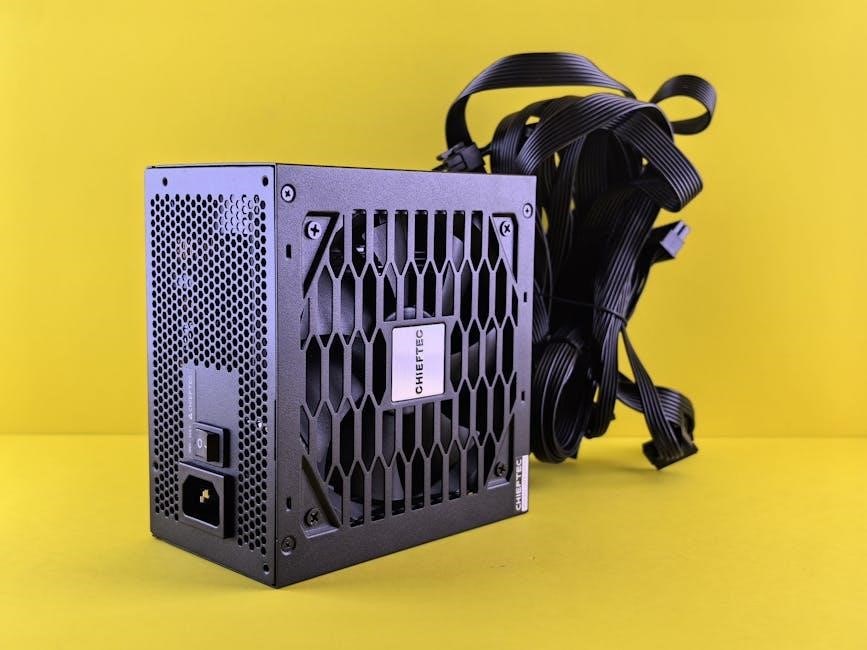
Connect the trailer plug to your vehicle‚ ensuring proper grounding and wire routing. Test each wire with a multimeter to confirm functionality and avoid short circuits.
Connecting the trailer plug to your vehicle requires careful attention to ensure proper functionality and safety. Start by matching the plug type on your vehicle to the trailer‚ using a wiring diagram as a reference. Identify each wire’s function‚ such as power‚ ground‚ and signal lights‚ and connect them securely. Use a multimeter to test for continuity and ensure no short circuits. Properly ground the system to avoid electrical issues. If needed‚ install a relay to prevent draining the vehicle’s battery. Double-check all connections for tightness and protection from moisture. Finally‚ test the trailer lights and brakes to confirm everything works correctly before towing.
Testing the trailer lights and brakes is crucial to ensure safety and proper functionality. Start by connecting the trailer plug to your vehicle and turning on the headlights. Check each light function: brake lights‚ turn signals‚ and running lights. Use a multimeter to verify power at each connector. For brakes‚ test both electric and hydraulic systems by applying the brakes and monitoring the trailer’s response. Ensure all lights sync with your vehicle’s signals. If issues arise‚ inspect connections for corrosion or damage. Regular testing prevents accidents and ensures compliance with road safety standards. Always test in a safe‚ open area before towing.

Identify issues by checking connections‚ fuses‚ and wiring. Use a multimeter to test for power and continuity. Corrosion or incorrect wiring often cause lighting or brake failures.
Start by inspecting the trailer plug and vehicle connector for corrosion or damage. Clean or replace corroded pins to ensure proper conductivity. Use a multimeter to test for power at each pin‚ verifying it matches the wiring diagram. Check for loose or incorrect connections‚ as these are common causes of malfunctioning lights or brakes. If a wire is damaged‚ splice in a new section or replace it entirely. Ensure all connections are securely tightened and protected from moisture. Grounding issues are frequent culprits; verify that the trailer’s ground wire is properly attached to the vehicle’s frame. After repairs‚ test the system thoroughly to confirm all functions operate correctly.
Common wiring issues often stem from corrosion‚ incorrect pin assignments‚ or damaged wires. Start by inspecting the trailer plug and vehicle connector for corrosion or wear. Clean or replace faulty connections to restore conductivity. Use a wiring diagram to verify that each pin is correctly matched to its function. If lights or brakes malfunction‚ test individual wires with a multimeter to identify breaks or short circuits. Address ground wire issues‚ as improper grounding is a frequent cause of electrical failures. For persistent problems‚ consider consulting a professional or using resources like etrailer.com for detailed guides. Always test the system after repairs to ensure proper operation.
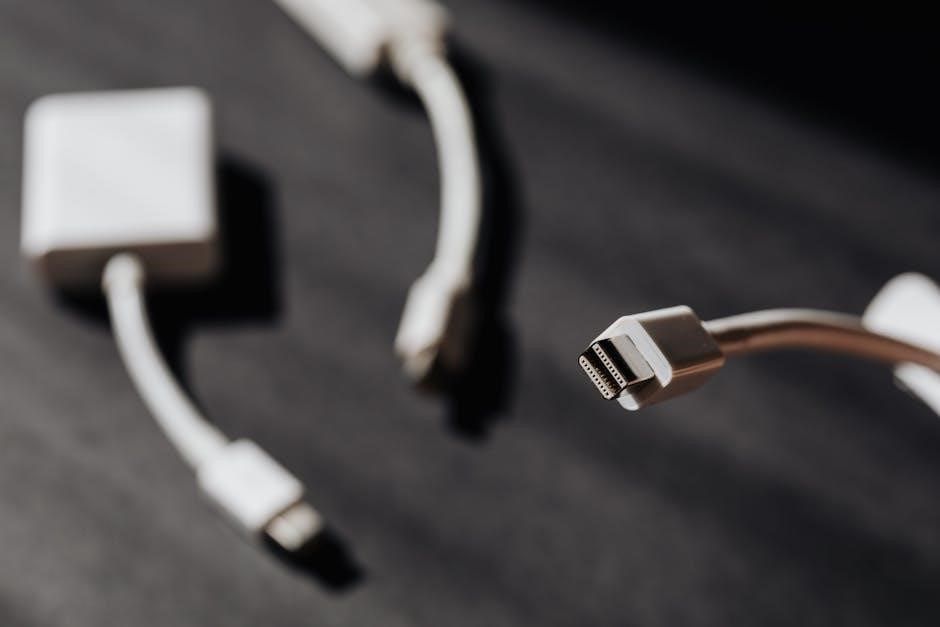
Regularly inspect wiring for damage or corrosion‚ ensure secure connections‚ and test systems after installation. Use wiring diagrams and consult resources like etrailer.com for complex setups.
Regular inspections of your trailer wiring system are crucial to ensure reliability and safety. Check connectors for corrosion or damage‚ and clean them if necessary. Inspect wires for signs of wear‚ such as fraying or chafing‚ and repair or replace them as needed. Verify that all connections are secure and properly seated. Use dielectric grease on connectors to prevent corrosion. Test your trailer lights and brakes periodically to ensure they function correctly. After any maintenance‚ reconnect the trailer plug and test the system again. Always follow wiring diagrams and consult resources like etrailer;com for guidance. Regular upkeep helps prevent issues and ensures your trailer operates safely and efficiently.
To optimize trailer plug performance‚ ensure all connections are clean and free from corrosion. Use dielectric grease on terminals to prevent moisture damage. Secure wires with proper routing to avoid chafing or pinching. Regularly test each pin for continuity and voltage drop to identify potential issues early. Consider upgrading to high-quality plugs or adapters for better conductivity. Avoid overloading circuits‚ as this can lead to overheating or failure. Always match the trailer plug type to your vehicle’s wiring system for compatibility; By following these steps‚ you can enhance reliability‚ reduce the risk of electrical faults‚ and ensure your trailer operates efficiently under various conditions.
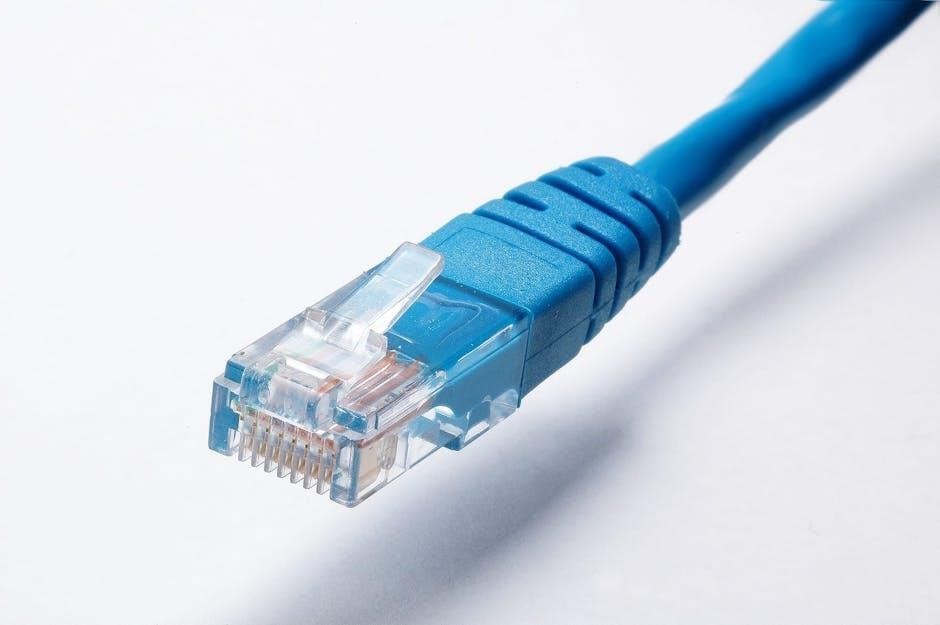
Wiring diagrams are crucial for identifying connections and functions. They use symbols and color codes to represent wires‚ plugs‚ and components‚ ensuring safe and accurate installations.
Reading wiring diagrams requires understanding symbols‚ color codes‚ and connections. Each wire is represented by a specific color‚ indicating its function‚ such as power‚ ground‚ or signal. The diagrams show how components like lights‚ brakes‚ and auxiliary systems connect to the trailer plug. Start by identifying the plug type (4-pin‚ 5-pin‚ etc.) and its pin layout. Match each wire to its designated function‚ ensuring proper alignment. For example‚ the upper left blade on a 7-pin plug often represents auxiliary power‚ while the upper right may indicate positive battery connections. Use the diagram to trace connections and verify compatibility with your vehicle’s wiring system. Always test wires with a multimeter to confirm functionality before finalizing connections.
Customizing your wiring diagram allows you to tailor the setup to your specific trailer needs. Start by identifying the functions you require‚ such as auxiliary power‚ brakes‚ or specialized lighting. Use online tools or consult diagrams to map out connections. For example‚ if your trailer needs constant power‚ ensure the auxiliary pin is correctly wired to your vehicle’s battery via a relay. Always test each wire with a multimeter to confirm proper connections. Label your custom diagram clearly for future reference. This approach ensures compatibility and avoids potential electrical issues. If unsure‚ consult a professional to guarantee safety and reliability.
Common mistakes include not using a relay for constant power‚ ignoring non-standard wiring colors‚ and improper testing. These errors can lead to battery drain or faulty connections.
Wiring errors can lead to faulty trailer connections‚ causing lights or brakes to malfunction. Incorrect wire connections may result in short circuits‚ damaging electrical systems or causing fires. Reversed polarity can disrupt proper function‚ while using the wrong wire gauge may lead to overheating. Improper grounding is another common issue‚ causing intermittent or complete loss of functionality. Neglecting to test connections can result in undetected issues‚ leading to safety hazards on the road. Always follow diagrams and guidelines to avoid these mistakes‚ ensuring reliable performance and safety for both the vehicle and trailer.
To prevent wiring mistakes‚ always refer to a wiring diagram specific to your trailer and vehicle. Double-check each wire’s function before connecting. Use a multimeter to test for continuity and ensure no short circuits. Properly label wires to avoid confusion. Secure all connections with heat-shrink tubing or electrical tape to prevent corrosion. Avoid using the wrong wire gauge‚ as it may lead to overheating. Ground wires correctly to ensure proper functionality. Test all lights and brakes after wiring to confirm everything works; If unsure‚ consult a professional or reliable guide. Regularly inspect wiring for damage or wear. By following these steps‚ you can ensure safe and reliable trailer connections.
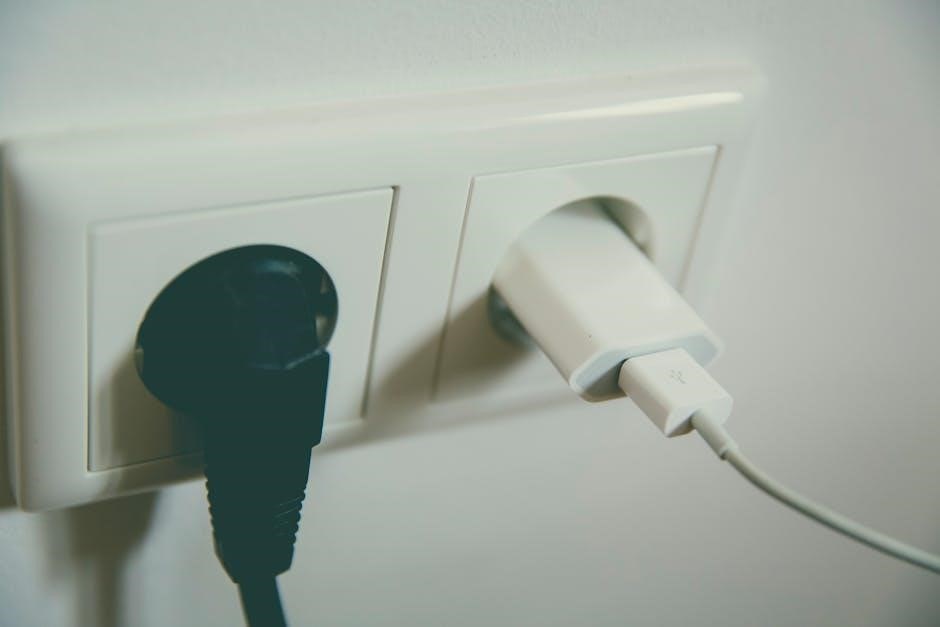
Exploring advanced trailer wiring topics involves custom solutions‚ accessory integration‚ and optimizing performance. Learn how to enhance your setup with specialized techniques and components for improved functionality.
Custom wiring solutions allow for tailored setups to meet specific trailer needs. This includes adding accessories like auxiliary power‚ brake controllers‚ or specialized lighting systems. By understanding your trailer’s unique requirements‚ you can design a wiring configuration that enhances functionality and safety. For complex setups‚ consider using relays to manage higher current loads and prevent overloading circuits. Always refer to detailed wiring diagrams and consult expert resources to ensure compatibility and proper installation. Testing each component thoroughly is crucial to avoid electrical issues. Custom solutions offer flexibility and reliability‚ making them ideal for trailers with advanced features or non-standard configurations. Proper planning and execution are key to achieving a seamless and efficient wiring system.
Adding accessories to your trailer wiring can enhance functionality and safety. Common additions include auxiliary power outlets‚ brake controllers‚ and specialized lighting systems. When integrating these‚ ensure they are compatible with your trailer’s electrical system. Use relays for high-current accessories to prevent overloading circuits. Always consult wiring diagrams and expert resources to confirm compatibility and proper installation. Testing each component after installation is crucial to ensure everything works seamlessly. Accessories like backup cameras or LED lighting can improve visibility and convenience. Properly planned and executed additions will enhance your trailer’s performance and safety‚ while avoiding potential electrical issues. Always follow safety guidelines and best practices when modifying your trailer’s wiring system.
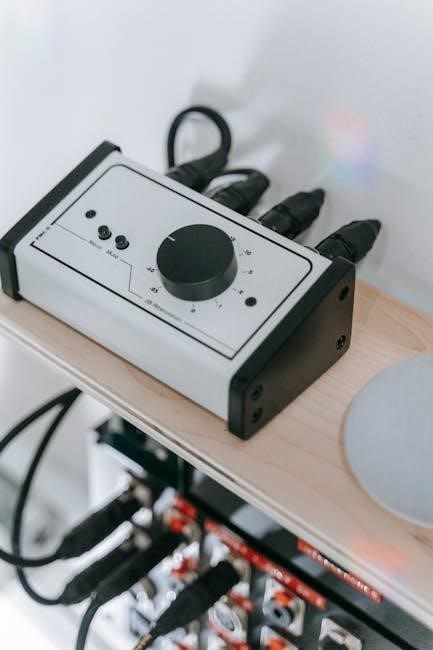
Visit etrailer.com for comprehensive guides‚ diagrams‚ and expert advice. Community forums like AJs Truck and Trailer Center offer additional support and troubleshooting tips for trailer wiring projects.
For reliable trailer wiring information‚ visit etrailer.com‚ which offers detailed guides‚ diagrams‚ and expert advice. AJs Truck and Trailer Center provides step-by-step tutorials and videos. Additionally‚ websites like Wiring Diagrams Central and Trailer Wiring Guide Blog are excellent resources for troubleshooting and custom wiring solutions. These platforms ensure you have access to accurate and up-to-date information to tackle any trailer wiring project confidently.
Engaging with community forums and expert advice is crucial for mastering trailer plug wiring. Websites like etrailer.com host forums where enthusiasts and professionals share experiences and solutions. These platforms often feature detailed discussions on wiring diagrams‚ troubleshooting‚ and custom setups. Experts frequently contribute step-by-step guides and video tutorials‚ making complex tasks easier to understand. For instance‚ discussions on wiring differences between utility and RV trailers highlight the importance of accurate connections. Additionally‚ forums provide real-world examples‚ such as resolving issues with 7-pin diagrams or understanding auxiliary power configurations. These resources not only solve problems but also foster a community that encourages learning and improvement in trailer wiring projects.
Proper trailer plug wiring ensures safety and functionality. This guide covered essential topics‚ from diagrams to troubleshooting. Apply this knowledge for reliable connections and explore further for advanced solutions.
Proper trailer plug wiring is crucial for safety and functionality. Always ensure connections are secure and meet your trailer’s specific needs. Regularly inspect wires and plugs for damage‚ and test lights and brakes before towing. Use high-quality materials and follow diagrams carefully to avoid errors. If unsure‚ consult a professional or reliable guides. Remember‚ correct wiring prevents accidents and ensures reliable performance. Stay informed about updates and best practices to keep your setup safe and efficient. By following these guidelines‚ you can enjoy hassle-free towing and protect your vehicle and trailer from potential damage.
Mastering trailer plug wiring opens doors to safer and more efficient towing experiences. Explore resources like etrailer.com for detailed guides and diagrams. Practice testing connections and understanding wiring diagrams to build confidence. Join forums and communities for expert advice and real-world tips. Continuous learning ensures you stay updated on best practices and troubleshooting techniques. Don’t hesitate to seek professional help when needed. By investing time in understanding trailer wiring‚ you’ll enhance your DIY skills and ensure reliable performance on the road. Keep exploring‚ and soon you’ll be a pro at customizing and maintaining your trailer’s electrical systems!
You must be logged in to post a comment.